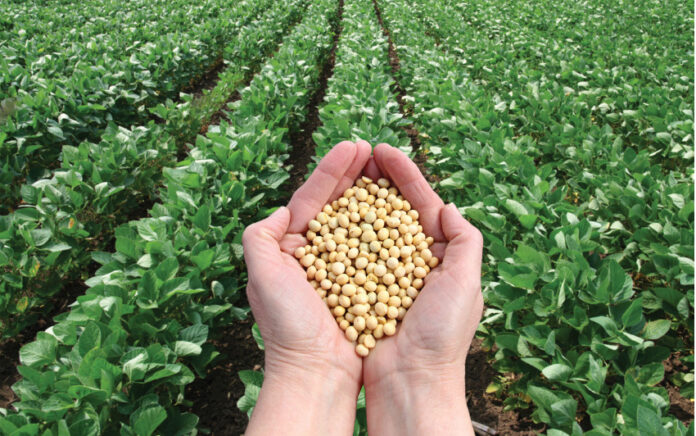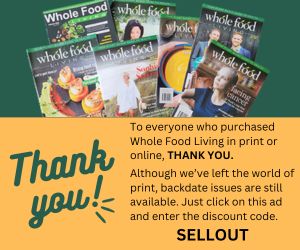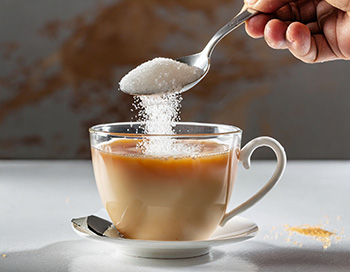CLOBBERED BY THE PR MACHINE
Over 50 years, I’ve seen many health food trends come and go. The saddest to witness was the demise of soy. In the 1970s, vegetarianism was booming. People began eating soy instead of meat and milk. I was one of them.
By the 1990s, Big Meat and Dairy were worried soy would threaten their bottom line. They were spending huge amounts on advertising, PR, research, lobbying and AstroTurf organisations (industry shills pretending to be grassroots movements) to scare the public away from soy consumption, according to John Robbins, author of The Food Revolution. I witnessed paranoia about men-boobs, breast cancer, retarded sexual organs in babies, allergic reactions, and so on, spread rapidly across New Zealand.
I felt fine eating soy over many years, so I was puzzled. Asians had stayed healthy, slim, and energetic eating soy for a couple of thousand years. Did we Westerners regard ourselves as a different species? Whatever the reason, this was largely ignored, and naturopaths started advising their clients to stop eating soy. At most, they conceded, vegans and vegetarians could safely eat fermented organic soy foods.
‘The Science’
As the 1900s became history, the rise of self-proclaimed experts and ‘influencers’ became our future. As one cynic put it, ‘Why am I being given nutrition advice from my hairdresser?’ Blogging and then Instagram gave voice to food gurus, authors, and the privileged health world’s ‘worried well,’ preaching ‘THE science’ and ridiculing the other guy’s science and dietary choices.
At the time, many vegetarians and vegans believed they were getting sufficient Vit B12 from certain natural foods like seaweed, Tempe, chlorella and mushrooms. But they weren’t – it has to be taken as a supplement. ¹ No wonder people started worrying if they were getting enough of the latest micronutrient or enough protein, if they had enough energy, or if anti-nutrients in plant foods were causing health problems.
Next thing, heated debates about cholesterol began, and coconut oil was everywhere, priming us for the ‘butter is back’ campaign, which triumphed. I watched, amazed, as most of my alternative lifestyle vegetarian friends returned to eating meat and cheese.
The Winners
I saw that scenario as a distract, divide-and-conquer situation. Obviously, the soy controversy and similar anti-grain, anti-legume, and pro-saturated fat campaigns were serving the interests of cattle and dairy farmers (and wider animal-protein-food industries) exceedingly well.
The market for organic soy fizzled, and protestors were no longer such a nuisance, so the meat, dairy and GM industries were focusing on growing their returns.
The global demand for meat had exploded, largely due to population growth and increasing wealth in China, so, in parallel, the demand for animal feed grew. Genetically modified (GM) crops were fitting the bill. From the first commercial field of GM soy, planted in 1996, GM production rocketed to its 350 million tonne-plus status today.
In the US, soy, now a subsidised crop, covered the fields of the upper Midwest. Brazil and other Latin countries jumped on the bandwagon. According to the American-based Food Revolution Network, there is now “more soy in a pound of feedlot beef than there is in a pound of tofu.” ²
Shunning GM Soy
You might not be worried about GM soy, but health-food consumers are. They don’t trust the objectivity of regulatory bodies, or corporate industry claims that, despite being heavily sprayed with glyphosate (Roundup), the amount of spray present in harvested beans is negligible and safe to ingest – especially long term. Glyphosate was declared ‘probably carcinogenic’ by the WHO, and though that is being questioned, traditional foods, spray-free or organically grown, are preferred.
Organic farmers, nature lovers, and climate activists have various concerns too. Understandably, people have been ‘giving the finger’ to Bayer/ex-Monsanto, hoping it would make a difference. It hasn’t. Café staff tell me their ‘no soy milk’ policies will help save the Amazon rainforest. I doubt it. It’s crucial we understand why because it seemed the opposite was true.
Ironically, thinking people eating organic but avoiding soy, fuelled the demise of organic and GM-free soy, thus indirectly supporting the production of meat from GM soy-fed animals, raising global methane and carbon emissions. Presumably, they were unaware of the wider implications.
Bye Bye Local Organic Soy
Once the soy ‘smear and scare’ campaign had the alternative health sector tightly in its grip, I watched the market for organic soy foods and many GM-free soy products being virtually decimated in Aotearoa, New Zealand. Vitasoy survived, but our local brand, Sanitarium, had to delete organic soy milk from their range. Tonzu organic soy yoghurt, another local product, was no more.
Various soy cheeses disappeared. Small food-manufacturing companies, fearing collapse, turned to almonds, pea and chickpea protein, coconut oil and coconut yoghurt to stay in business. Sales of soy-based miso and organic soy sauce slumped. I still can’t buy organic soybeans in the dry goods section in health food stores. Kings Seeds stock soy seed – when they can get it. Often, they can’t.
All the more important that we support organic soy, one would think. But the majority of people in the natural and organic food sectors are avoiding it.
The Big Health Threat
Most alternative health lifestylers are aware of the damage huge corporations are doing to the Earth, to animals, and to human health. “Big Seed, Big Ag, Big Pharma, Big Food. We’re one step ahead of them,” we say. “But it’s not like that with grass-fed cattle here in New Zealand.”
Feeling smug about healthy cows grazing on green fields is not the point. Land use is the point. You and me feeling glowingly healthy today is great, but that’s not the point either. Survival is the point. Not just yours and mine.
Because of climate change, the very survival of the entire human race and endless species of wildlife (70 per cent gone already), and farmed animals across planet Earth, is now in jeopardy. If nature cannot survive, neither can we. Climate change is the biggest health threat. And soy matters.
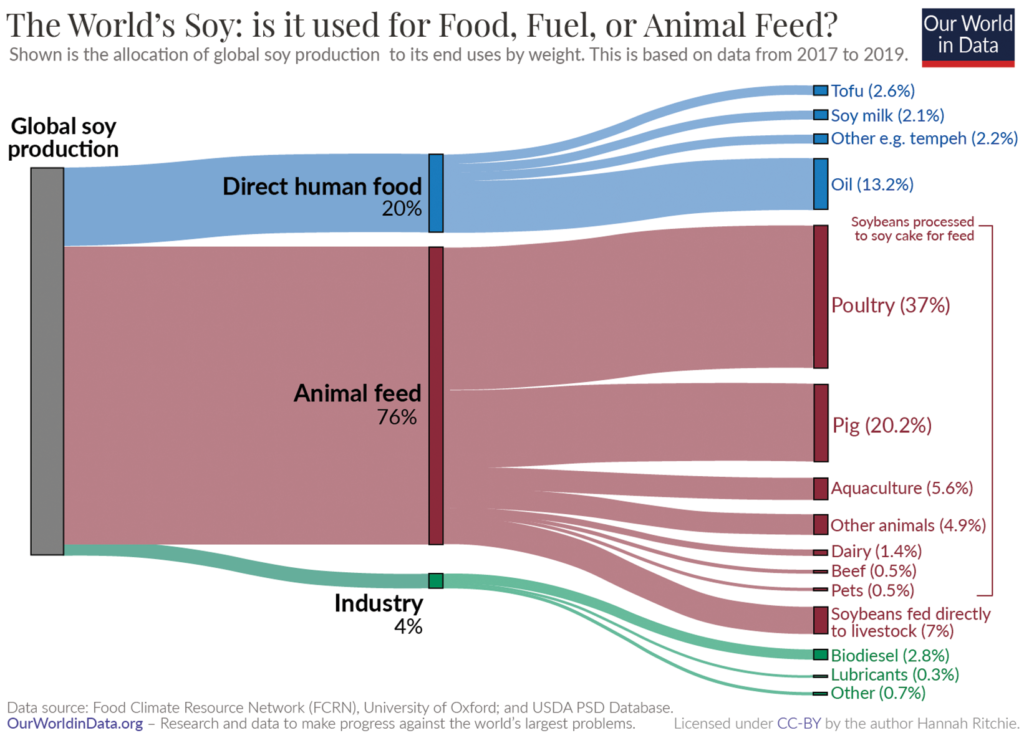
We’ve got mega-tonnes of this soy, but World Data shows that only 7% is used to feed people (plus 13% for cooking oil and oil in foods). We picture soy animal feed turning into meat, dairy, and eggs, but most of it simply keeps the animals alive. For every 100 kilocalories fed to a feedlot or organic cattle, we only get two kilocalories of beef back. Cereals are also grabbed for animals. Less than half the world’s cereals are eaten by humans – 41 per cent goes to animals, and 11 per cent into biofuels. ³
Thinking Global
Global thinking is crucial. As world citizens, we must cap and lower the demand for beef to save farmland and rainforests from being turned into beef pastureland and GM soy and corn plantations. The science community is calling on us to cap and lower demand for animal foods in general if we are to reach carbon zero and prevent zoonotic diseases and biodiversity loss.⁴
Health-conscious plant-based and meat eaters share a belief in organic whole foods. But the case for meat is weakening as climate change damages the planet. The call is for livestock to be raised on hills and other land where crops cannot be grown. Regenerative farmers say they’d added value to such land by building living soil and growing nut trees, and their cattle would graze underneath. If you eat meat, that would be a better choice. But there’s an even better one; eating less meat – a lot less.
According to Our World in Data, it takes almost 100 times as much land to produce a gram of protein from beef or lamb versus peas or tofu. It has been common knowledge for decades that soy could feed between ten and 14 times more people than meat using the same amount of land and less water. We can feed the poor. But instead, we extract the oil for our frying pans and feed the bulk of the rest (containing all the nutrients) to animals that feed the rich. We have to ask ourselves, ‘Is this what we want? Are we going to think beyond ourselves and stand in our humanity? Or do we continue to ignore it?’
Acting Local
The colonisation of land by sheep and cattle here and in many countries worldwide is a relatively new phenomenon. For most of our farmers, it is all they know, so the task of rapidly reducing emissions is daunting. Increasing our capacity to grow a wide range of nourishing plant foods like whole grains, quinoa, peas, lentils, beans, peanuts, tree nuts, white lupin, sunflower, linseeds and soy might be exciting, but it involves facing many challenges. Land use is one. And land use is everything.
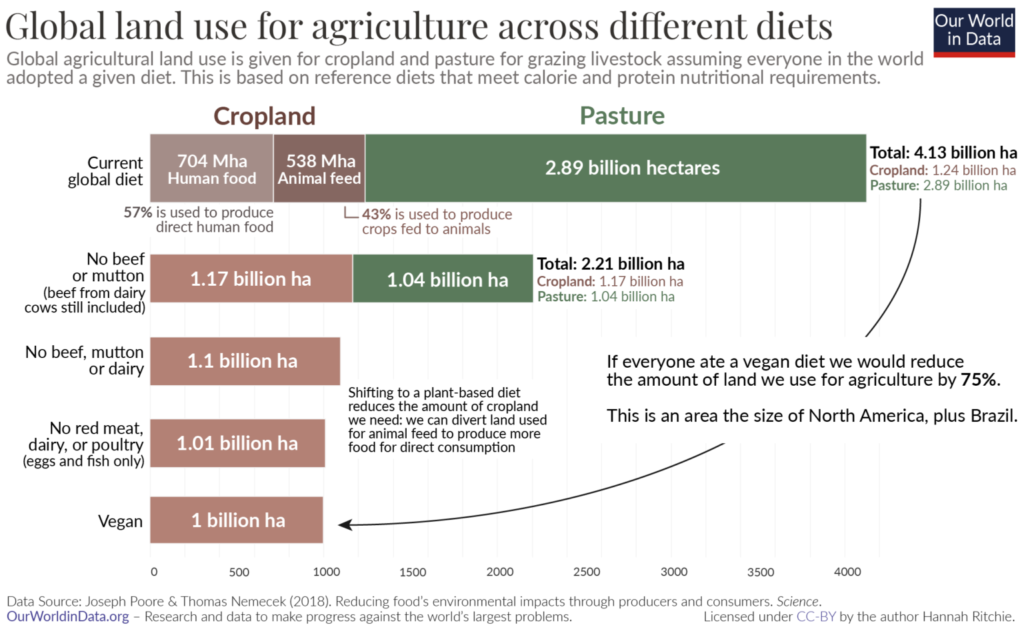
In the Kitchen
At home, food choice is everything. A radical reduction of meat, butter, and hard cheese is necessary. It’s not a matter of ‘going without.’ People are finding that a whole new world of taste and variety opens out. Increasing our knowledge and skills for preparing and cooking a balanced range of plant foods is a joy for most people and very rewarding.
Unless we have a genuine soy allergy, we’re not going to get sick or die from eating soy. Research shows we’ll be healthier. My granddaughter, now at university, continues the practical evidence for me. She is my family’s 3rd generation, ordinary Kiwi, healthy, plant-based eater – enjoying soy.
But alas! The long-term future for all my plant-eating grandchildren is not looking good. Climate change will bring increasingly devastating, unrelenting weather events. If we don’t act now to slow this down, world famine looks likely. Thousands will get sick and die. Ditching fossil fuels is crucial. But it’s difficult, and only half the picture.
Eating plant-based is the easiest way to reduce our carbon footprint immediately. What will it take to get more veggies and less meat on our plates? What will it take for the world to stop creating new plantations and start feeding the massive amount of soy we harvest to people instead of animals? Do you eat organic but not soy? And you caution your friends about soy?
If you answered yes, it’s time to move on from sowing fear and start sowing beans. For humanity’s sake, it’s time to step up and support organic soy, spray-free, and GM-free soy, even if you don’t eat it yourself. It’s time to step up and support healthy plant protein foods in general. Eating meat may have a place, but it is not going to help save the Earth. Eating soy just might.
Concerns
Some people are allergic to soy. For most people, soy whole foods, eaten in moderation, are a proven-healthy, affordable source of complete protein.
IBS sufferers can react to whole soy, so small servings are helpful. Tofu and soy protein isolate products cause no trouble, though. Processed foods are rarely healthier than whole foods. Choose whole soy if you can.
Organic soy infant formulas have been safe since it was discovered that iodine needed to be included in the formula. GM soy has been sprayed with higher amounts of glyphosate (Roundup).
Dozens of reputable research studies have now debunked fear-inducing claims about soy. For more detail on this go to the Health Hub section on tonzu.co.nz
Celebrations
Soy is easy to grow. My husband and I have been growing our own organic soy in sunny spots for years. Soy yogurt is delicious and easy to make.
Other locally grown plant protein foods like quinoa are increasingly available. Contemporary research on soy is all good news.
Learn how to identify vested-interest fight-back campaigns from animal food industries, e.g. fear of not enough protein, iron, calcium, fat-soluble vitamins, etc.
Takeaway
By eating a balanced diet of whole, plant-based foods supplemented with Vit B12, you’re likely to remain a healthy, wealthy, and wise global citizen making a difference!
References:
1. https://veganhealth.org/vitamin-b12/
2. https://foodrevolution.org/blog/soy-facts-is-soy-healthy/
3. https://www.orfonline.org/expert-speak/rising-meat-consumption-climate-change-and-pandemics-untangling-the-multilevel-connections-68346/
4. Text information by Hannah Ritchie & Max Roser from Our World in Data.org
Helpful articles:
https://tonzu.co.nz/soybeans-marketing-agendas-and-the-scientific-truth/
https://www.drfuhrman.com/blog/137/dont-fall-for-the-myths-about-soy
https://freefromharm.org/health-nutrition/vegan-doctor-addresses-soy-myths-and-misinformation/


